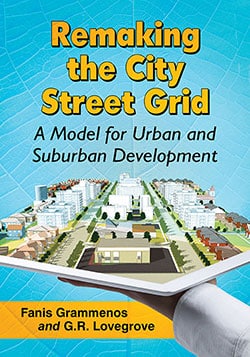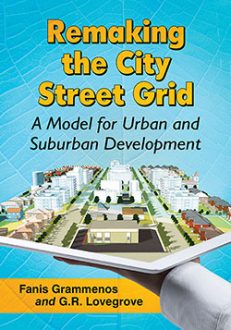Remaking the City Street Grid
A Model for Urban and Suburban Development
$29.95
In stock
About the Book
Of all the elements of a neighborhood, the pattern of streets and their infrastructure is the most enduring. Given the 20th century’s additions to the range of transportation means—trains, subways, buses, trucks, bicycles, motorbikes and cars—all vying for space and effectiveness, a fresh look at the streets is warranted. This book contributes a new system of neighborhood design with a focus on contemporary planning priorities.
Drawing lessons from historic and current development, it proposes a new pattern more fitting for modern culture, addressing such issues as walkability, mobility, health, safety, security, cost and greenhouse gas emissions. Case studies of national and international neighborhoods and districts based on the new network model demonstrate its application in real-world situations.
Instructors considering this book for use in a course may request an examination copy here.
About the Author(s)
Bibliographic Details
Fanis Grammenos and G.R. Lovegrove
Format: softcover (7 x 10)
Pages: 216
Bibliographic Info: 62 illustrations, appendix, notes, bibliography, index
Copyright Date: 2015
pISBN: 978-0-7864-9604-4
eISBN: 978-1-4766-1768-8
Imprint: McFarland
Table of Contents
Table of Contents
Preface 1
Introduction 5
1. The Idea of Pattern and Its Use 9
2. Networks and Their Users Under Stress 20
3. Adaptations, Transformations and Innovations 40
4. A Contemporary Pattern 79
5. The Fused Grid Design Process 104
6. Research Evidence on Key Expected Outcomes 123
7. Case Studies of Applications and Designs 147
Appendix: A Speculative Investigation into the Origins of Orthogonal Layouts 175
Chapter Notes 187
Bibliography 201
Index 205
Book Reviews & Awards
“thought-provoking”—Sustainable Cities Collective; “a thoughtful and comprehensive overview of street design…meticulously detail[ed]”—Planning Institute of British Columbia.





